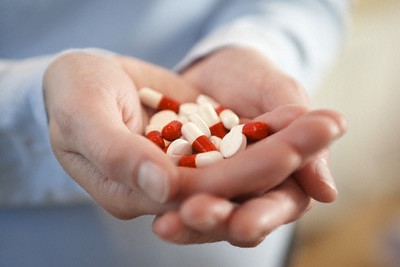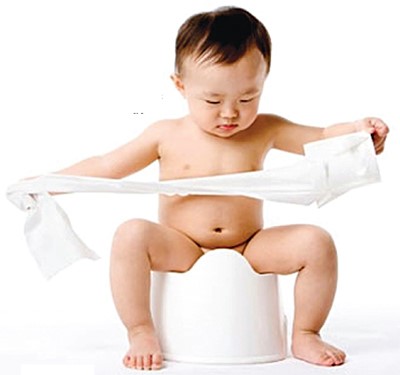Understanding Diarrhea Treatment
When a person suffers from diarrhea, his first desire is to stop it, and for children, it is the parents' anxiety. But how to stop diarrhea, what medicine to take for diarrhea?
Drugs for non-infectious diarrhea
Non-infectious diarrhea, also called non-specific diarrhea related bowel such as digestive disorders, colitis.... The drug works by affecting the metabolism of fluid, electrolyte through the intestine, reducing stool output, increasing stools viscosity, bulk density.
There are two non-specific diarrhea-treated drugs: loperamide and racecadotril. They have similarities and differences.

Photo: internet
They are all non-antibacterial so they are usually used for non-infectious diarrhea; In infectious diarrhea they are not used individually, if used, they need to be combined with other. If using them in preventing and treating non-specific diarrhea, they reduce the loss of fluids, electrolytes. However, when electrolyte depletion has occurred, they have not been able to replaced rehydration solution such as oresol, 0.9% sodium chloride or ringer lactate .
They have some differences in mechanism, side effects, how to use:
Loperamide is a synthetic opioid for adults, less toxic to the central nervous system such as natural opioids. However, loperamide can be neurotoxic to children under 6 years old. Therefore, loperamide is not used to treat diarrhea in children under 6 years old. Racecadotril is not an opioid, no these side effects, suitable for children over 3 months of age.
One principle in treating bacterial diarrhea is not to be kept stools in the bowel for long periods. Loperamide’s mechanism of action will retain stools in the intestine for a long time; Therefore, it makes proliferating the intestinal bacteria, reborn to the infection. In case the bacteria secretes toxins, loperamide retains the toxin and increases toxins. This side effect occurs when using loperamide to treat infectious diarrhea with a persistent high-dose (decreased intestinal motility, over-increased contraction of the sphincter). While racecadotril has a mechanism of decreasing drainage without decreasing intestinal motility, not increasing contraction of the sphincter, so that racecadotril doesn’t have loperamide’s side effect. Also that the racecadotril’s dose range is broader.
Loperamide is a synthetic opioid for adults, less toxic to the central nervous system such as natural opioids. However, loperamide can be neurotoxic to children under 6 years old. Therefore, loperamide is not used to treat diarrhea in children under 6 years old. Racecadotril is not an opioid, no these side effects, suitable for children over 3 months of age.
Loperamide at high doses will cause constipation, nausea, dry mouth, abdominal distention, intestinal paralysis (decreases intestinal motility, over-increases internal anal sphincter tone); dizziness, fatigue (by affecting the nervous system). Do not use loperamide with patients are diminished bowel movement, abdominal distention, not use for pregnant (because there is not enough information), can be used for lactating people (because the secretion of milk is very little) but should use with lowest dose. Be cautious when used for gastric ulcer, impaired liver function. Within 48 hours of taking loperamid alone or in combination with other diarrhea medications without results, should discontinue, ask for other solutions, without increasing the dose. Racecadotril with therapeutic doses, no serious adverse effects have yet been recorded.
These distinctions are intended to be used in appropriate cases, not to compare two drugs.
Drugs for infectious diarrhea
Infectious diarrhea are caused by bacteria or bacterial toxins secreting fluid loss - electrolytes. To stop diarrhea, need to use antibiotics for each type of infection.
With shigellosis infection: Classical antibiotics such as cotrimoxazol are 90% resistant to bacteria (2009), nalixidic acid is resistant to 70% (2009), should not be used. At present, WHO and Viet Nam need to use fluorophenolon (cyprofloxacin or ofloxain, perfloxacin) or ceftriaxon.
With escherichia coli infection: If it is a common E. coli, bactrim, berberin can be used; Otherwise fluoroquinolones may be used. If the toxin is not used antibiotics, because it will increase the release toxin causing Hemolytic-uremic syndrome.
With common sallmonela infection (S.non-typhi): when infected in large amounts, generated enough toxins, poisoning happens. There are violent symtoms: abdominal cramps, fever. However, when separated from the source of infection, the disease does not get worse. Just take medicine for symptoms. For healthy adults, antibiotics are not necessary. For the elderly, children (weak resistance) can use antibiotic. Use bactrim, if not respond changing into fluoroquinolon.
With sallonella enterica typhi infection (typhoid): antibiotics as chloramphenicol, bactrim have very high drug resistance (through many outbreaks of disease, see that no longer respond).
It is necessary to use fluoroquinolone - new specific antibiotics - such as ofloxacin (oral or injection). From the beginning, do not take a strong dose (because too much bacteria will produce harmful toxins that aggravate the symptoms), but only the initial dose is 2/3 of the normal dose and gradually increase, maintain until recovery. After one using phase, diarrhea will be prevented. However, in some patients, although there are no symptoms but stools remain have bacteria; so antibiotics is needed in next treatment phase.
With campylobacter infection: due to infection from undercooked poultry. Use erythromycin after 4 days to get effective; If not respond, fluoroquinolone may be used.
With viral infections: most commonly rotavirus (in infants), or norovirus (more than in adults). Can be outbreaks but not dangerous. Only need to treat symtoms such as rehydration.

Photo: internet
Infectious diarrhea causes more fluid and electrolytes loss than non-infectious diarrhea. Fluid and electrolytes loss will cause endocrine disorders, most importantly fatalities. Rehydration is the first-line solution. At present, the physician as well as the patient understands the importance and do it well. However, if you do not care enough to identify infections, use antibiotics, do not consider carefully (like any diarrhea also use bactrim, use even antibiotics with the drug resistance), you will not be treated but spread the bacteria to other people, spread bacteria into the environment causing the epidemic.
Incorrect diarrhea treatments
In the past, there was no medicine, people often use guava leaves, myrtle leaves, which contained many tannins to firm intestinal mucosa, to stop diarrhea. If the diarrhea related gastrointestinal disorders, this approach may cause further gastrointestinal (adverse reactions), especially to children. If diarrhea is caused by bacterial infection, this method will not be resistant to bacteria to lose the cause of diarrhea (because tannin is not antibacterial).
(Translate from: http://suckhoedoisong.vn/hieu-va-dung-dung-thuoc-cam-tieu-chay-n41645.html)










